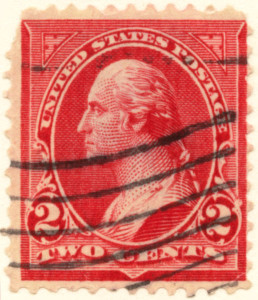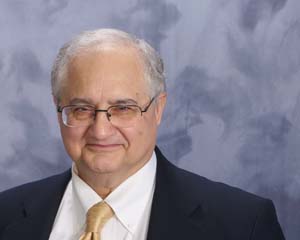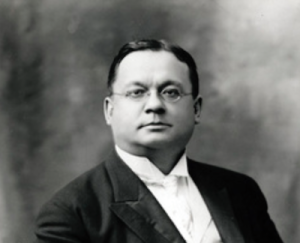It Started with Correspondence Education!
Before the widespread use of electronic communications, educators used print technology and the postal service for what became known as correspondence education. Oriented towards the adult learners, especially those who could not join institutions of higher education, correspondence learning helped thousands of Americans to learn new skills for specific jobs, and access a wealth of courses and other learning materials in literature, arts and sciences from the mid 19th century.
According to Moore, Pittman, Anderson, and Kramarae (2003) “The Chautauqua Correspondence College was founded in 1881, and in 1883 was authorized by the State of New York as the Chautauqua College of Liberal Arts to offer collegiate instruction by correspondence and to award diplomas and degrees.” (P. 8).
Pittman whose research has focused on the history of distance education, along with many other scholars in the field, consider William Rainey Harper, the founding president of the University of Chicago, as the first person who established the practice of collegiate correspondence education in the United States. However, Pittman also credits the Reverend Samuel Fallows, the president of Illinois Wesleyan University (IWU) who advocated establishing an “external degree” program in 1873, 20 years before the University of Chicago inaugurated its correspondence study program.
Formal accounts of correspondence education appeared in early 1900. Reverend Joseph H. Odell, D. D. (1910) in his address titled The New Era in Education: A Study of the Psychology of Correspondence Methods of Instruction delivered in November of 1910 at the dedication of the instruction building of the International Correspondence Schools in Scranton Pennsylvania said:
“The International Correspondence Schools employ no less than 1,600 men in the United States and Canada whose main mission in life is go through the heterogeneous mass of humanity as the Apostles of Ambition, to discover and direct and inspire their fellows with a desire for the benefit of education. I do not know any innovation upon existing methods more radical and revolutionary than this. Here is an educational institution that spends more than two million dollars a year to create a demand for education.” (p. 9).
 Pittman (1990, 2003, 2013) presented critical historiographies of correspondence education tracing the origin of the field in the U. S. to 1892 when University of Chicago began offering courses by correspondence. He considered correspondence study the “ancestor of all collegiate- sponsored distance education in the United States.” The practice provided the organizational structure in several colleges and universities in which today’s distance education via the Internet is operating. Edelson and Pittman (2001) suggested correspondence education developed two parallel tracks; one found its home and prospered in higher education, and the other in the private sector.
Pittman (1990, 2003, 2013) presented critical historiographies of correspondence education tracing the origin of the field in the U. S. to 1892 when University of Chicago began offering courses by correspondence. He considered correspondence study the “ancestor of all collegiate- sponsored distance education in the United States.” The practice provided the organizational structure in several colleges and universities in which today’s distance education via the Internet is operating. Edelson and Pittman (2001) suggested correspondence education developed two parallel tracks; one found its home and prospered in higher education, and the other in the private sector.
The quality of education in the commercial sector ranged from very good to outright fraudulent. The commercial or “proprietary” schools engaging in deceptive practices damaged the reputation of distance education to the point the federal government withdrew its financial support of students in such schools and established rules limiting the practice in the 1950s. It was not until 2002 that the federal government began to relax the regulations.
Even in higher education, where very reputable faculty and administrators were practicing, correspondence education did not develop parity of esteem with the so-called “traditional” form of teaching and learning. This issue still has not been resolved completely, despite the rapid growth of distance education among universities in recent years, and overwhelming research evidence there is no “statistically significant difference” between the effectiveness of distance and face-to-face instruction.
Such elitist attitude toward distance and correspondence education reveals an aspect of the field that was important at its inception and might become even more important in the future.
Distance education or correspondence study has helped the average person access education, often for developing vocational and farming skills. As such, it was a democratizing trend in education. Edelson and Pittman (2001) stated:
“Correspondence study, a system that allowed—even encouraged—the common man or woman to take charge of his or her own  learning, and guaranteed access to all who desired it, complemented a persistent theme in American political philosophy, the glorification of the common citizen. In U.S. political history, this theme is often called ‘Jacksonian Democracy,’ after Andrew Jackson, the country’s seventh president, a noted champion of the “common man,” who urged his followers to resist intimidation by the social and political elite that had previously governed the country. Thus, correspondence study was a tool of a movement one scholar called ‘the democratization of knowledge’”
learning, and guaranteed access to all who desired it, complemented a persistent theme in American political philosophy, the glorification of the common citizen. In U.S. political history, this theme is often called ‘Jacksonian Democracy,’ after Andrew Jackson, the country’s seventh president, a noted champion of the “common man,” who urged his followers to resist intimidation by the social and political elite that had previously governed the country. Thus, correspondence study was a tool of a movement one scholar called ‘the democratization of knowledge’”
Throughout the past century many trade schools also relied on reaching their students by correspondence study and until recently the primary medium of training and independent study in business and industry was print, which made it ideal for correspondence education as well.
REFERENCES
Edelson, P. J., Pittman, V. V. (2001). E-learning in the United States: New directions and opportunities for university continuing education. http://www.stonybrook.edu/spd/dean_papers/newdelhi.pdf
Moore, M. G., Pittman, V. V., Anderson, T., and Kramarae, C. (2003). From Chautauqua to the virtual university: A century of distance education in the United States. Columbus, OH: Center on Education and Training for Employment, The Ohio State University. Retrieved from http://www.calpro-online.org/eric/docs/distance.pdf
Odell, J. H. (1910). The new era in education: A study of the psychology of correspondence methods of instruction. Scranton, PA: International Correspondence Schools.
Pitman, V. V. (2003). V. V. University correspondence study: A revised historiagraphic perspective. In M. G. Moore, (Ed). Handbook of distance education (3rd. Ed.). (21-37). New York, NY: Routledge.
Pitman, V. V. (2003). Correspondence study in the American university: A second historigraphics perspective. In Moore, M. G., & Anderson, W. G. (Eds.). Handbook of distance education. (21-35). Mahwah, NJ: Lawrence Erlbaum.
Pittman, V. V. (1990). Correspondence study in the American university: A historiographic perspective. In M. G. Moore (Ed.), Contemporary American distance education (pp. 67-96). Oxford, UK: Pergamon Press.
ARTICLES IN THIS SERIES
Introduction to Distance Education: Conceptual Development









